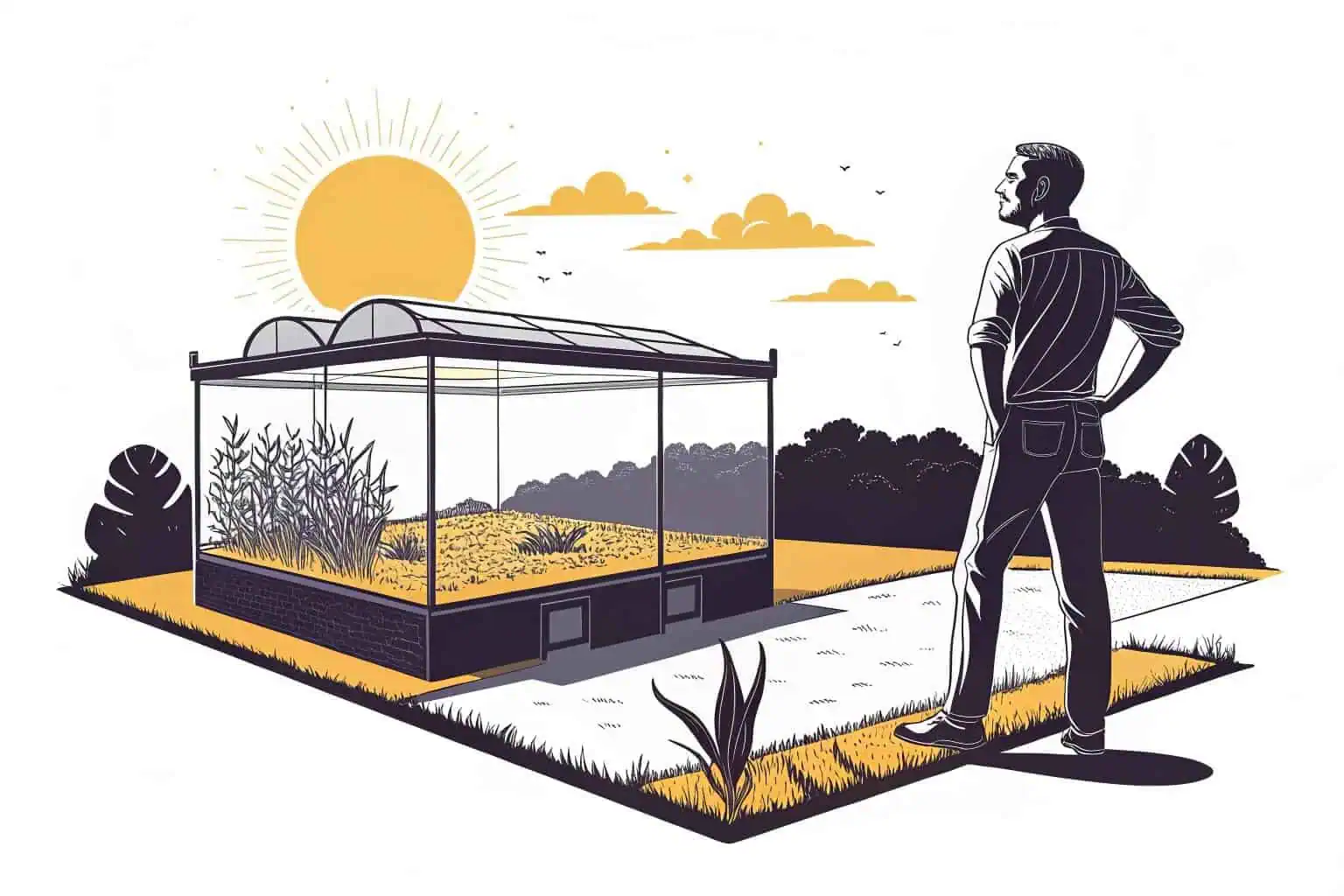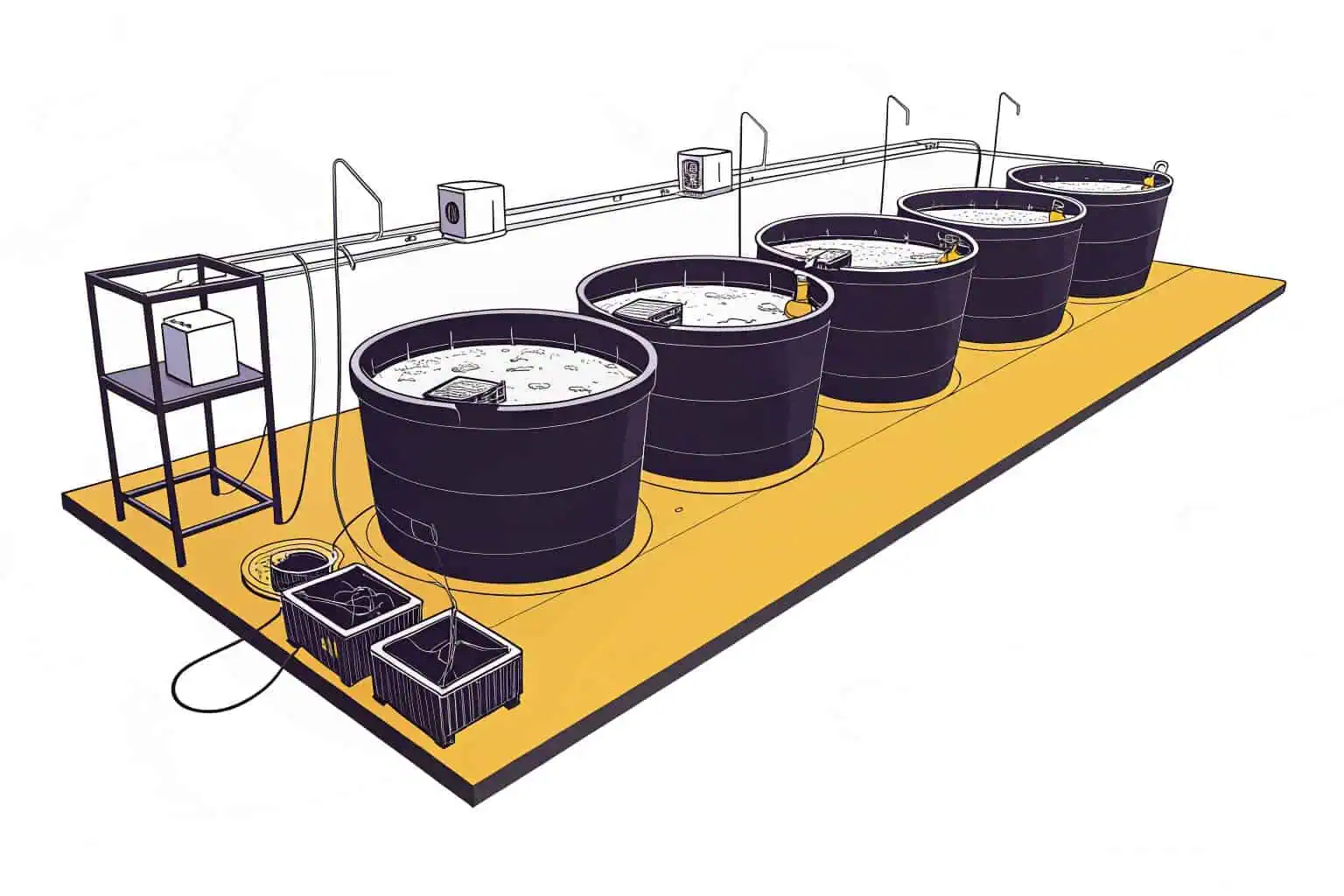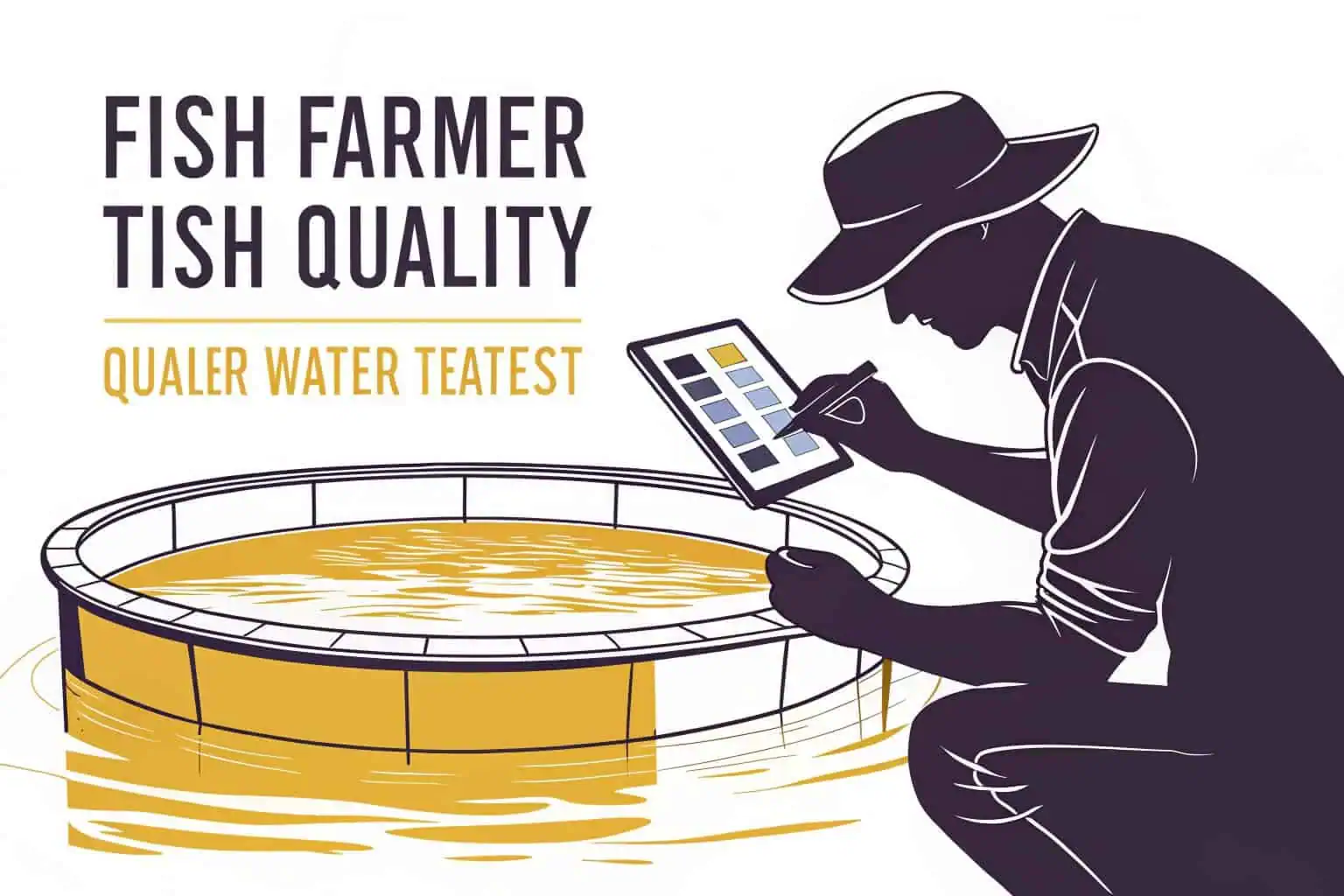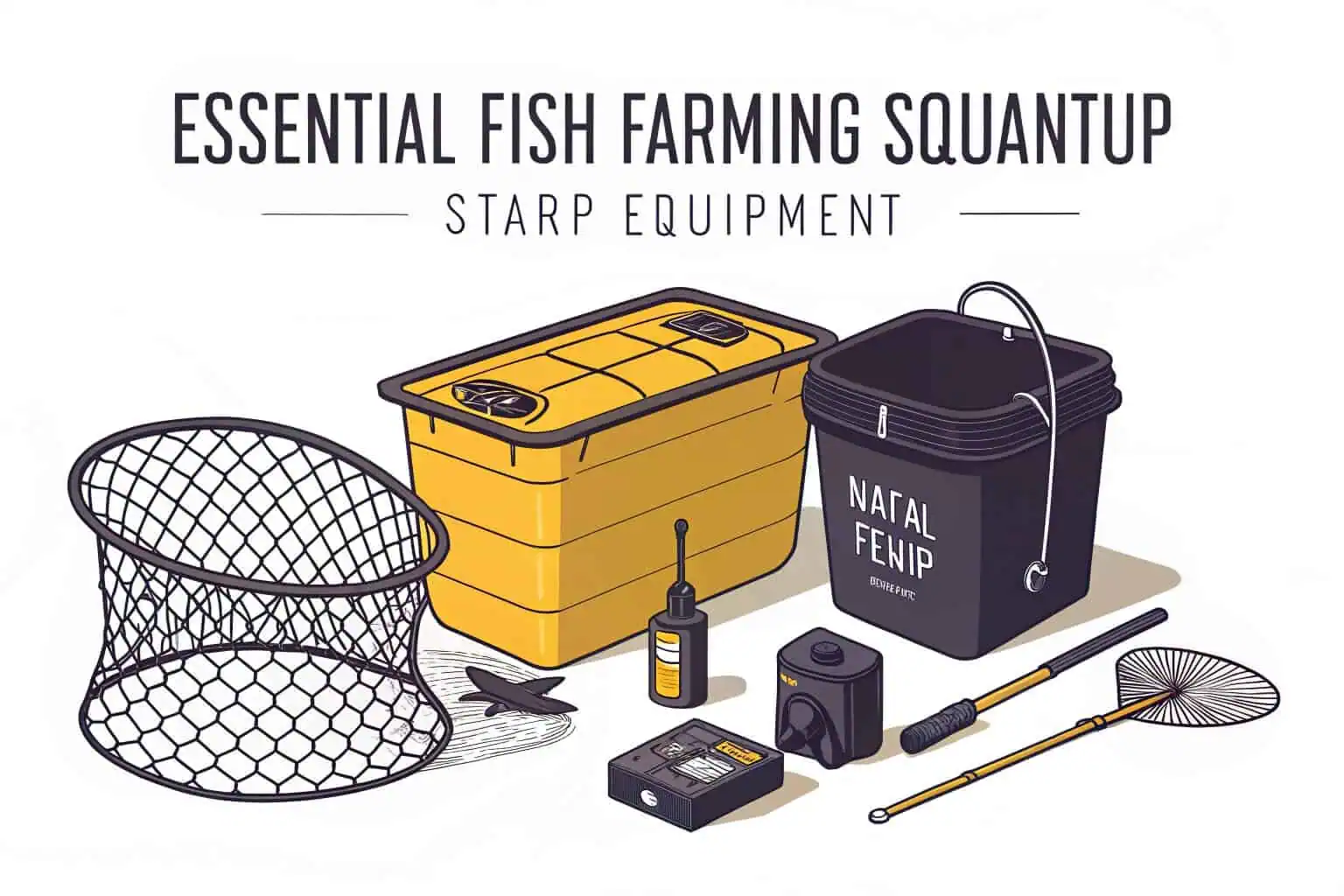Can you help us set up a fish farming project?
Starting a fish farm feels overwhelming, right? You have the passion but face endless questions about equipment, costs, and success. The dream of a thriving fish farm seems distant, tangled in complexity.
Yes, absolutely. Setting up a fish farm is achievable with the right guidance. It involves selecting a suitable site, choosing the right fish species, and investing in durable equipment like our collapsible fish tanks to ensure a successful and sustainable start in aquaculture.

I've seen many people with a passion for aquaculture hesitate to start. They worry about the challenges, from water quality management to market fluctuations. But I believe that with careful planning and the right tools, anyone can turn their vision into a reality. Let's break down the process together, step by step, to show you how you can build your own successful fish farming venture.
Can I start my own fish farm?
Do you dream of running your own fish farm but feel unsure where to begin? The path seems complicated, filled with technical details and financial hurdles that make it feel out of reach.
Yes, you can definitely start your own fish farm. With passion and a solid plan, it's a viable business. Start small, learn the basics of fish care and water management, and choose reliable equipment. This approach will help you grow your farm successfully over time.

Starting my journey, I felt the same mix of excitement and uncertainty. The idea of contributing to food security1 and rural economies was a huge motivator. However, the practical side of things, like managing day-to-day operations, seemed daunting. I learned that success isn't about having all the answers from day one. It's about being willing to learn and adapt. The key is to break down the big dream into smaller, manageable steps. You don't need a massive operation to begin. A few high-quality, durable tanks, like the ones we provide at Bancy, can be the perfect starting point. They are easy to set up and maintain, which lowers the initial barrier to entry. This allows you to focus on what truly matters: raising healthy fish and building a sustainable business2 from the ground up.
Finding Your Niche
First, think about who you want to serve. Are you aiming for local restaurants, a community market, or a larger distributor? Your target market will influence the type of fish you raise. For example, raising tilapia is great for local markets because they grow fast. On the other hand, a more specialized species might appeal to high-end restaurants. Understanding your potential customers is the first step to building a solid business plan.
| Business Planning Step | Description | Influence on Business Decisions | Example |
|---|---|---|---|
| Identify Target Market3 | Determining who you intend to sell your fish to | Influences the type of fish you raise | Local restaurants, community market, larger distributor |
| Understand Customer Needs4 | Understanding the preferences and requirements of your target customers | Helps determine the most suitable fish species to raise | Raising tilapia for local markets (fast growing), specialized species for high-end restaurants |
Gaining Knowledge
Next, you need to learn the trade. I spent countless hours reading, attending workshops, and talking to experienced farmers. You can find great resources online, in local agricultural extension offices, or through industry associations. Don't be afraid to ask questions. Learning about water quality, disease prevention5, and feeding schedules is crucial. This knowledge is your best tool for overcoming the challenges that will inevitably arise.
What is the major problem in fish farming?
Worried about the risks in fish farming? Many potential farmers are held back by fears of disease outbreaks or poor water quality, which can wipe out their entire stock and investment overnight.
The biggest challenge in fish farming is maintaining optimal water quality. Poor water conditions lead to stress, disease, and high mortality rates. Consistent monitoring and using reliable equipment, like leak-proof tanks, are essential for preventing these issues and ensuring a healthy environment for your fish.

I've learned the hard way that you can't cut corners on your equipment. In the early days, I tried to save money with a cheaper tank, but it ended up costing me more in the long run. A sudden leak drained a significant portion of the water, stressing the fish and leading to a small-scale disease outbreak. It was a wake-up call. That's when I understood the value of investing in quality. A durable, leak-proof tank6, like the ones we build at Bancy with double-welded seams7, provides peace of mind. It creates a stable environment where fish can thrive, protected from the sudden shocks that can lead to disaster. This isn't just about having a container for water; it's about creating a secure home for your livestock, which is the foundation of your business.
Disease Prevention
Disease is often a symptom of a larger problem, usually poor water quality. To prevent outbreaks, you need a proactive approach. This means regular water testing for parameters like pH, ammonia, and dissolved oxygen. It also means quarantining new fish before introducing them to your main stock. A simple mistake here can be devastating. By staying vigilant, you can catch problems early before they spiral out of control.
| Aspect of Disease Management | Description | Action/Strategy | Benefit/Outcome |
|---|---|---|---|
| Root Cause of Disease | Disease often a symptom of a larger problem | Usually poor water quality | Addresses the underlying issue |
| Prevention Approach | Need a proactive approach to prevent outbreaks | Regular water testing8 | Helps catch problems early |
| Key Water Parameters | Parameters to test for | pH, ammonia, dissolved oxygen | Provides data for monitoring water health |
| Introducing New Fish | Need to manage the introduction of new fish | Quarantining new fish9 | Prevents introducing disease to main stock |
| Risk of Mistakes | A simple mistake can be devastating | Staying vigilant | Catches problems early before they spiral |
| Outcome of Vigilance | By staying vigilant | Catch problems early | Prevents problems from spiraling out of control |
Market Fluctuations
Another challenge is the market itself. Prices for fish can change based on supply and demand. This is why having a diverse business plan10 is smart. Maybe you can sell to different types of customers, or even process your fish to add value, like smoking or filleting. Being flexible helps you navigate the financial ups and downs of the industry.
How much money does it take to start a fish farm?
Is the cost of starting a fish farm holding you back? Many people believe it requires a massive upfront investment, making them think their dream is financially impossible before they even start exploring it.
The initial cost to start a fish farm can range from a few thousand to tens of thousands of dollars. Key expenses include land, tanks, fish stock, feed, and water systems. Starting small with scalable equipment like our collapsible tanks helps manage initial costs effectively.

When I first drew up my business plan, the numbers looked intimidating. It's easy to get caught up in planning for a large-scale operation from the get-go. But I quickly realized that a smarter approach was to start small and grow organically. My first investment was in a couple of high-quality, collapsible fish tanks. This decision was crucial because it kept my initial capital expenditure11 low while giving me a reliable foundation. It allowed me to test my processes and understand the market on a smaller scale without taking on huge debt. As my farm became profitable, I reinvested the earnings into more tanks and better equipment. This scalable approach12 is what I recommend to every new farmer. It makes the venture less risky and allows your business to grow at a sustainable pace, driven by its own success.
Breakdown of Initial Costs
Let's look at where the money goes. Your costs will vary, but here's a general idea:
| Item | Estimated Cost (Small-Scale) | Notes |
|---|---|---|
| Fish Tanks13 | $500 - $2,000 | Depends on size and material. Collapsible tanks are cost-effective. |
| Fish Stock | $200 - $800 | Varies by species and quantity. |
| Feed | $300 - $1,000 | This is a major ongoing cost. |
| Water Pump & Aeration | $200 - $700 | Essential for water quality. |
| Permits & Licenses14 | $100 - $500 | Varies by location. |
Reducing Ongoing Expenses
Your biggest ongoing cost will be feed. To manage this, it's important to use high-quality feed and avoid overfeeding, which pollutes the water and wastes money. Additionally, investing in energy-efficient pumps15 can help lower your electricity bills over time. Every dollar you save on operations is a dollar that can be reinvested into growing your farm.
What is the minimum area required for fish farming?
Do you think you don't have enough space for a fish farm? Many people assume you need a vast expanse of land and water, overlooking the potential of compact, modern aquaculture systems for smaller areas.
You don't need a large area to start fish farming. With modern, high-density systems like collapsible tanks, you can start a small-scale farm in a backyard or a small plot of land. A space as small as 100 square meters can be sufficient to begin.

I've visited aspiring farmers who were discouraged because they only had a small piece of land. They had the passion but believed their space was too limited. I always tell them that modern fish farming is more about efficiency than sheer size. The beauty of using systems like our Bancy collapsible fish tanks16 is their flexibility. You can set them up almost anywhere, whether it's a backyard, a greenhouse, or even a garage. This technology opens up opportunities for people in urban and suburban areas who want to get into aquaculture. It proves that you don't need a sprawling rural property to build a productive and profitable fish farm. It's about making the most of the space you have with the right technology.
Tank-Based Systems
The most space-efficient method is using tanks. Unlike traditional ponds, tanks allow you to control the environment completely and raise fish at a higher density. Our galvanized pipe and sheet tanks are perfect for this. They are sturdy, reliable, and can be set up in various sizes to fit your available space. This means you can produce a surprising amount of fish in a relatively small footprint.
| Feature | Tanks | Traditional Ponds |
|---|---|---|
| Space Efficiency17 | Most space-efficient | Less space-efficient |
| Environmental Control18 | Complete control | Less control |
| Fish Density19 | Higher density | Lower density |
| Our Product (Tanks) | Galvanized pipe and sheet tanks | - |
| Product Attributes | Sturdy, reliable, can be set up in various sizes to fit available space | - |
| Production Outcome | Produce a surprising amount of fish in a relatively small footprint | Lower production for the same footprint |
Vertical Farming Concepts
For those with very limited ground space, you can even think vertically. Stacking smaller tanks or integrating your system into a multi-level structure20 can maximize your production capacity. While this is a more advanced setup, it shows the incredible potential for innovation in space-limited environments. The future of farming isn't just about going bigger; it's about getting smarter and more efficient with the resources we have.
Conclusion
Starting a fish farm is a journey of passion and planning. With the right knowledge and durable equipment, you can build a successful and sustainable business, no matter the scale.
-
Exploring this resource will provide insights into effective strategies for enhancing food security, crucial for sustainable development. ↩
-
This link will guide you through essential steps and innovative ideas to create a successful and sustainable business. ↩
-
Understanding your target market is crucial for tailoring your products and marketing strategies effectively. ↩
-
Grasping customer needs allows businesses to meet demand more effectively, leading to higher satisfaction and loyalty. ↩
-
Disease prevention is key to maintaining healthy crops and livestock. Check this resource for proven strategies to safeguard your farm. ↩
-
Discover why a leak-proof tank is essential for maintaining a healthy aquatic environment and preventing costly disasters. ↩
-
Learn how double-welded seams enhance the strength and longevity of tanks, ensuring a safe habitat for your fish. ↩
-
Exploring this link will provide insights on how regular water testing can prevent disease outbreaks and ensure aquatic health. ↩
-
This resource will explain the critical role of quarantining in preventing disease spread in aquatic environments. ↩
-
Exploring this resource will provide insights on how a diverse business plan can enhance resilience and profitability in the fish market. ↩
-
Learning about managing initial capital expenditure can guide you in making smart financial decisions for your business. ↩
-
Understanding a scalable approach can help you grow your business sustainably and reduce risks. ↩
-
Explore this link to discover the most suitable fish tanks for your aquaculture needs, ensuring optimal conditions for your fish. ↩
-
Understanding the necessary permits and licenses is crucial for compliance; this resource will guide you through the requirements. ↩
-
This resource will explain the advantages of energy-efficient pumps, helping you save on operational costs. ↩
-
Discover the innovative design of Bancy collapsible fish tanks and how they can transform small spaces into productive fish farms. ↩
-
Understanding space efficiency can help optimize fish farming operations and maximize yield. ↩
-
Exploring environmental control can reveal strategies to enhance fish health and production. ↩
-
Understanding fish density is crucial for optimizing aquaculture yields and ensuring fish health. ↩
-
Learn about designing multi-level structures to maximize production capacity in limited spaces. ↩